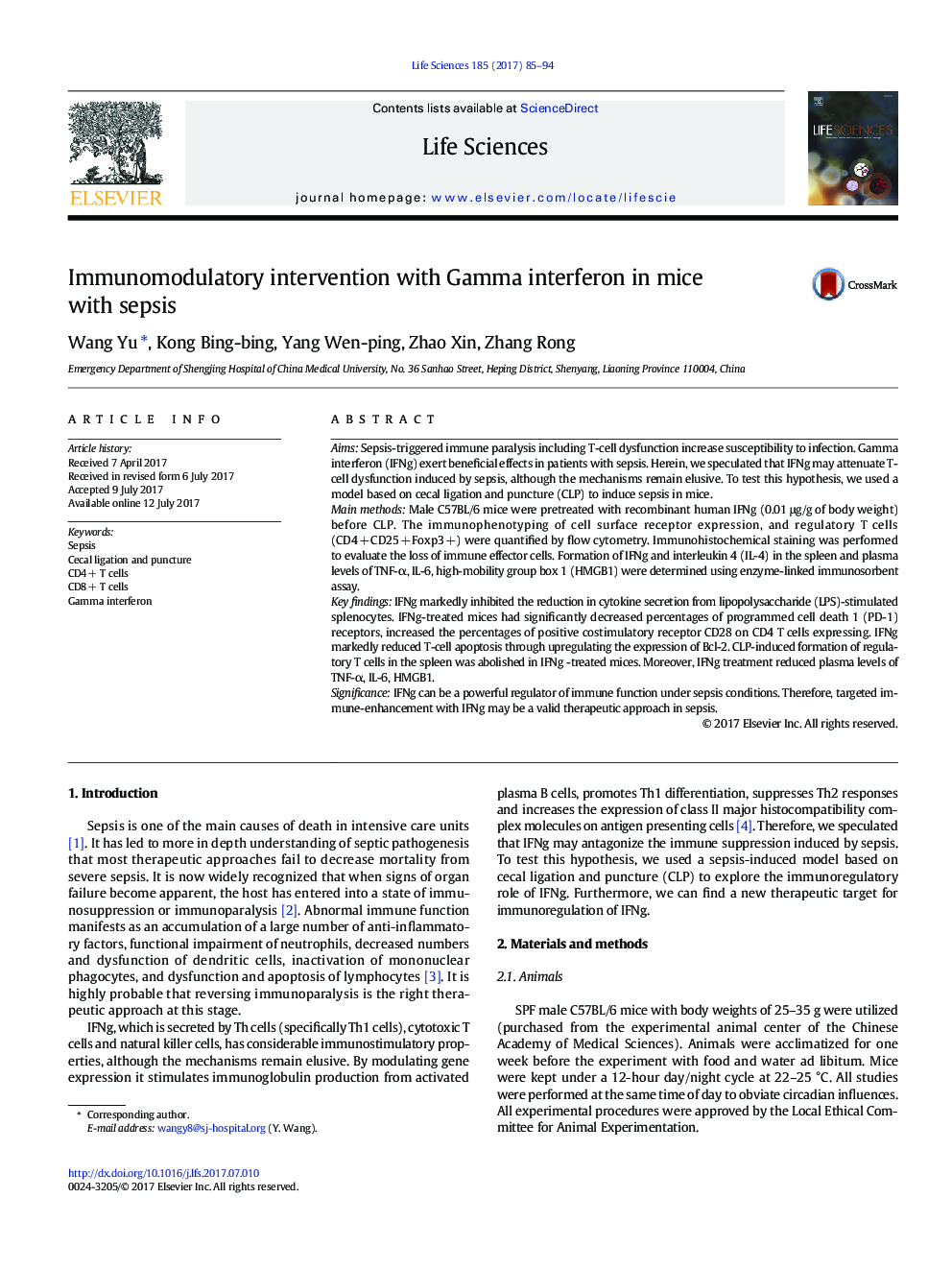| Article ID | Journal | Published Year | Pages | File Type |
|---|---|---|---|---|
| 5556743 | Life Sciences | 2017 | 10 Pages |
AimsSepsis-triggered immune paralysis including T-cell dysfunction increase susceptibility to infection. Gamma interferon (IFNg) exert beneficial effects in patients with sepsis. Herein, we speculated that IFNg may attenuate T-cell dysfunction induced by sepsis, although the mechanisms remain elusive. To test this hypothesis, we used a model based on cecal ligation and puncture (CLP) to induce sepsis in mice.Main methodsMale C57BL/6 mice were pretreated with recombinant human IFNg (0.01 μg/g of body weight) before CLP. The immunophenotyping of cell surface receptor expression, and regulatory T cells (CD4 + CD25 + Foxp3 +) were quantified by flow cytometry. Immunohistochemical staining was performed to evaluate the loss of immune effector cells. Formation of IFNg and interleukin 4 (IL-4) in the spleen and plasma levels of TNF-α, IL-6, high-mobility group box 1 (HMGB1) were determined using enzyme-linked immunosorbent assay.Key findingsIFNg markedly inhibited the reduction in cytokine secretion from lipopolysaccharide (LPS)-stimulated splenocytes. IFNg-treated mices had significantly decreased percentages of programmed cell death 1 (PD-1) receptors, increased the percentages of positive costimulatory receptor CD28 on CD4 T cells expressing. IFNg markedly reduced T-cell apoptosis through upregulating the expression of Bcl-2. CLP-induced formation of regulatory T cells in the spleen was abolished in IFNg -treated mices. Moreover, IFNg treatment reduced plasma levels of TNF-α, IL-6, HMGB1.SignificanceIFNg can be a powerful regulator of immune function under sepsis conditions. Therefore, targeted immune-enhancement with IFNg may be a valid therapeutic approach in sepsis.
